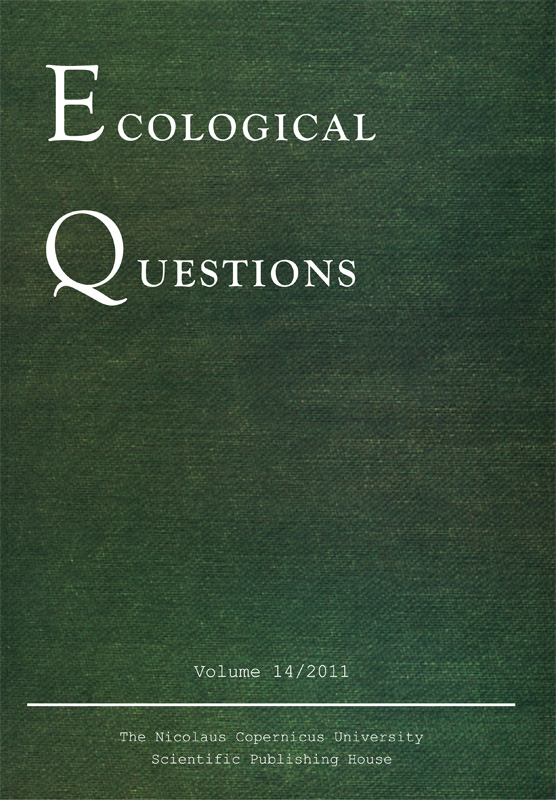Ecophysiology of Carpobrotus rossii in Tasmania: Linking plant’s antioxidant pctivity with a natural habitat
DOI:
https://doi.org/10.12775/v10090-011-0026-3Keywords
flavonoid, tannin, oxidative stressAbstract
Flavonoids extracted from Carpobrotus rossii possess cardioprotective activity and as such there is interest in maximising the per plant yield of these compounds. This field study was undertaken to determine the environmental variables driving flavonoid production. Results suggest that production of tannin and flavonoid metabolites is not controlled by a single variable alone, but through an interplay of variables linked to oxidative stress in the plant.References
Demidchik V., Cuin T. A., Svistunenko D., Smith S. J., Miller A. J., Shabala S., Sokolik A. & Yurin V., 2010, Arabidopsis root K+ efflux conductance activated by hydroxyl radicals: single-channel properties, genetic basis and involvement in stress-induced cell death, Journal of Cell Science 123: 1468-1479. http://gateway.webofknowledge.com/gateway/Gateway.cgi?GWVersion=2&SrcApp=PARTNER_APP&SrcAuth=LinksAMR&KeyUT=000276912300011&DestLinkType=FullRecord&DestApp=ALL_WOS&UsrCustomerID=b7bc2757938ac7a7a821505f8243d9f3
Geraghty D., Jacobson G., Narkowicz C., Shing C. & Pirie A., 2010, Effect of chronic Carpobrotus rossii (pigface) ingestion on systolic blood pressure, body weight, blood lipids, haematological profile and in vitro vascular function in adult male rats, Proceedings of ASCEPT. Dec. 2010, Melbourne: 36.
Hernandez I., Alegre L., Van Breusegem F. & Munne- Bosch S., 2009, How relevant are flavonoids as antioxidants in plants?, Trends in Plant Science 14 (3): 125-132. http://gateway.webofknowledge.com/gateway/Gateway.cgi?GWVersion=2&SrcApp=PARTNER_APP&SrcAuth=LinksAMR&KeyUT=000264681000003&DestLinkType=FullRecord&DestApp=ALL_WOS&UsrCustomerID=b7bc2757938ac7a7a821505f8243d9f3, DOI: http://dx.doi.org/10.1016/j.tplants.2008.12.003
Scalabrelli G., Saracini E., Remorini D., Massai R. & Tattini M., 2007, Changes in leaf phenolic compounds in two grapevine varieties (Vitis vinifera L.) grown in different water conditions, [in:] V. Nuzzo, P. Giorio, C. Giulivo (eds.), Proceedings of the International Workshop on Advances in Grapevine and Wine Research: 295-299.
Shabala S., 2009, Salinity and programmed cell death: unravelling mechanisms for ion specific signalling, Journal of Experimental Botany 60 (3): 709-711. http://gateway.webofknowledge.com/gateway/Gateway.cgi?GWVersion=2&SrcApp=PARTNER_APP&SrcAuth=LinksAMR&KeyUT=000264189900001&DestLinkType=FullRecord&DestApp=ALL_WOS&UsrCustomerID=b7bc2757938ac7a7a821505f8243d9f3, DOI: http://dx.doi.org/10.1093/jxb/erp013
Venning J., 1984, Carpobrotus, [in:] Flora of Australia, vol. 4: Phytolaccaceae to Chenopodiaceae, (Australia Bo- FaF, ed.), Australian Government Publishing Service Canberra.
Downloads
Published
How to Cite
Issue
Section
Stats
Number of views and downloads: 661
Number of citations: 0



